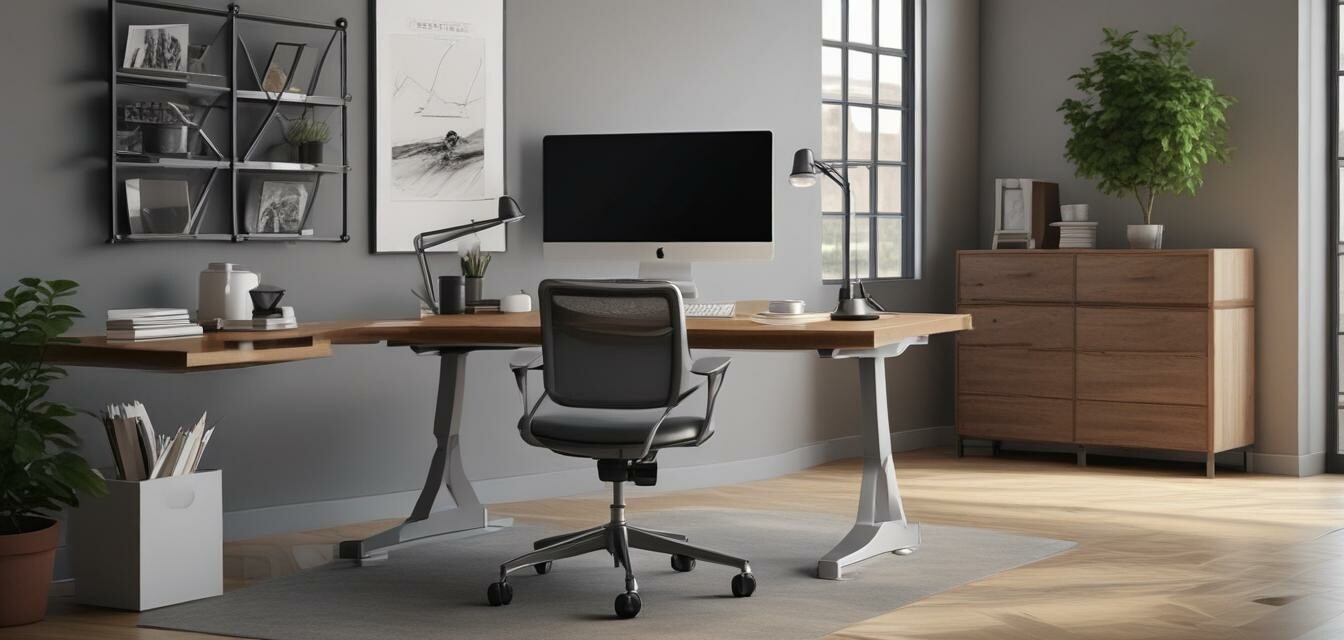
The Ultimate Guide to Standing Desks
Key Takeaways
- Standing desks can improve posture and reduce the risk of health issues related to prolonged sitting.
- When choosing a standing desk, consider factors such as height adjustability, size, and material.
- Accessories like anti-fatigue mats and adjustable monitors enhance the standing desk experience.
- Transition gradually from sitting to standing to make the most out of your standing desk.
- Combining standing and sitting throughout the day is recommended for optimal comfort and productivity.
Standing desks have become increasingly popular among professionals seeking healthier work environments. With a range of styles and features available, selecting the right standing desk can seem overwhelming. This guide will equip you with essential insights on the benefits, features to consider, and tips for effectively using a standing desk in your home office.
Benefits of standing desks
Standing desks offer several health and productivity benefits, contributing to a better work experience. Here are some of the key advantages:
- Improved posture: Standing encourages better alignment of the spine.
- Increased energy levels: A standing position can help maintain energy and focus.
- Reduced risk of health issues: Less prolonged sitting can decrease the chances of various health problems.
- Enhanced productivity: A more engaging workspace can lead to higher efficiency.
Choosing the right standing desk
When selecting a standing desk, there are several important factors to consider:
| Feature | Description | Importance |
|---|---|---|
| Height adjustability | Allows you to modify the desk height for both sitting and standing positions. | Crucial for comfort and ergonomic alignment. |
| Size | Ensure the desk fits your space and has enough surface area for your tasks. | Essential for maintaining an organized workspace. |
| Material | Choose durable materials that suit your aesthetic preferences and weight capacity. | Affects overall longevity and appearance. |
| Portability | Look for options with wheels if you need to move your desk often. | Convenient for versatile workspaces. |
Types of standing desks
Standing desks come in various types that cater to different needs:
- Manual standing desks: Require manual adjustments using a crank or lever.
- Electric standing desks: Use an electric motor for effortless height changes.
- Convertibles: These are designed to sit on top of an existing traditional desk, allowing for easy transition between sitting and standing.
Accessories for standing desks
To maximize your standing desk experience, consider investing in accessories:
- Anti-fatigue mats: Cushioned mats can reduce foot discomfort during prolonged standing.
- Monitor stands: Adjustable monitor stands enhance visual ergonomics.
- Keyboard trays: Help position your keyboard at an optimal height for typing comfort.
Pros
- Promotes better posture
- Enhances energy levels
- Reduces sedentary lifestyle risks
- Increases overall productivity
Cons
- May cause discomfort if standing too long without breaks
- Possible expense compared to traditional desks
- Requires careful adjustment to individual height
Tips for using standing desks effectively
Beginner's section
- Start with short standing intervals of 15-30 minutes and gradually increase.
- Alternate between sitting and standing throughout your workday.
- Wear supportive footwear to enhance comfort.
- Take regular breaks to walk around and stretch.
Conclusion
Investing in a standing desk can significantly enhance your home office experience by promoting better posture and improving productivity. Remember to choose a desk that suits your space and preferences, and incorporate accessories that help create a more comfortable work environment. By following the tips outlined in this guide, you can create a balanced workspace that meets your professional needs.
Additional Resources
For more information on selecting furniture for your workspace, explore our Buying Guides for a comprehensive look at various furniture categories, such as office desks, ergonomic chairs, and filing cabinets. You'll find essential tips and advice to ensure you choose the right furniture for your home office.